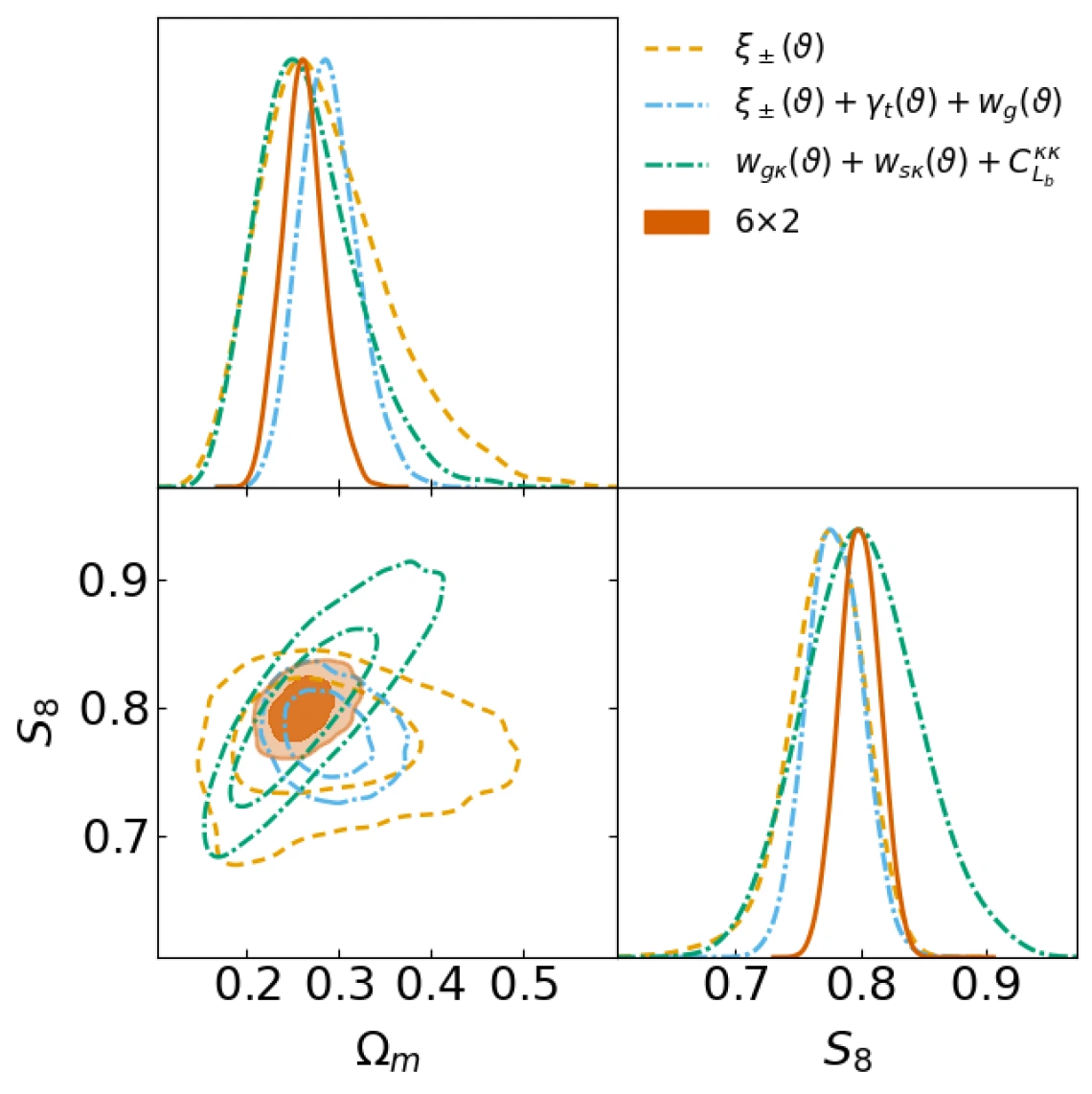New paper out! Constraining Baryonic Physics with DES Y1 and Planck data -- Combining Galaxy Clustering, Weak Lensing, and CMB Lensing

We constrain cosmology and baryonic feedback scenarios with a joint analysis of weak lensing, galaxy clustering, cosmic microwave background (CMB) lensing, and their cross-correlations (so-called 6×2) using data from the Dark Energy Survey (DES) Y1 and the Planck satellite mission. Noteworthy features of our 6×2 pipeline are: We extend CMB lensing cross-correlation measurements to a band surrounding the DES Y1 footprint (a ∼25% gain in pairs), and we develop analytic covariance capabilities that account for different footprints and all cross-terms in the 6×2 analysis. We also measure the DES Y1 cosmic shear two-point correlation function (2PCF) down to 0.′25, but find that going below 2.′5 does not increase cosmological information due to shape noise. We model baryonic physics uncertainties via the amplitude of Principal Components (PCs) derived from a set of hydro-simulations. Given our statistical uncertainties, varying the first PC amplitude Q1 is sufficient to model small-scale cosmic shear 2PCF. For DES Y1+Planck 6×2 we find S8=0.799±0.016, comparable to the 5×2 result of DES Y3+SPT/Planck S8=0.773±0.016. Combined with our most informative cosmology priors -- baryon acoustic oscillation (BAO), big bang nucleosynthesis (BBN), type Ia supernovae (SNe Ia), and Planck 2018 EE+lowE, we measure S8=0.817±0.011. Regarding baryonic physics constraints, our 6×2 analysis finds Q1=2.8±1.8. Combined with the aforementioned priors, it improves the constraint to Q1=3.5±1.3. For comparison, the strongest feedback scenario considered in this paper, the cosmo-OWLS AGN (ΔTheat=108.7 K), corresponds to Q1=5.84.
